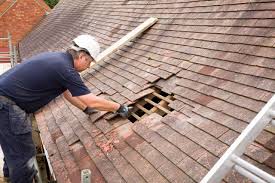Hey there, fellow homeowners and soon-to-be property moguls! Today, we’re diving into a topic that might make some of you a bit nervous, but trust me, it’s crucial information that could save you a ton of headaches (and money) down the road. We’re talking about the Common Issues Found During a Home Inspection. Now, don’t worry – we’re not here to scare you, but to arm you with knowledge. Because let’s face it, when it comes to your biggest investment, ignorance is definitely not bliss!
Why Home Inspections Matter
Before we jump into the nitty-gritty, let’s chat about why home inspections are such a big deal. Think of a home inspection as a physical check-up for your house. Just like how you go to the doctor for an annual home inspection of your body, your home needs regular check-ups too. It’s all about catching small issues before they turn into big, expensive problems.
The Power of Prevention
- Save Money: Fixing small issues is way cheaper than major repairs.
- Peace of Mind: Knowing your home’s condition helps you sleep better at night.
- Plan Ahead: Inspections help you budget for future maintenance and upgrades.
- Safety First: Some issues aren’t just costly – they can be dangerous if left unchecked.
The Top 10 Issues Home Inspectors Often Find
Alright, let’s get down to business. Here are the most Common Issues Found During a Home Inspection. Buckle up – some of these might surprise you!
1. Water Damage: The Silent Home Wrecker
What Inspectors Look For:
- Stains on ceilings, walls, or floors
- Musty odors
- Warped wood or sagging structures
Why It Matters:
Water damage can lead to mold growth and structural issues if not addressed promptly.
2. Faulty Wiring: A Shocking Discovery
Red Flags:
- Outdated wiring (like knob-and-tube in older homes)
- Overloaded electrical panels
- Improperly modified electrical systems
The Big Deal:
Electrical issues are not just inconvenient – they’re a major fire hazard.
3. Poor Drainage and Grading
Signs of Trouble:
- Water pooling near the foundation
- Cracks in the foundation walls
- Damp basements or crawl spaces
Long-Term Effects:
Improper drainage can lead to foundation damage, which is one of the most expensive issues to fix.
4. Roof Problems: More Than Just a Few Missing Shingles
Common Findings:
- Curling, missing, or damaged shingles
- Signs of leaks in the attic
- Improper flashing around chimneys and vents
Why You Should Care:
A compromised roof can lead to water damage throughout the entire house.
5. Plumbing Predicaments
What Inspectors Check:
- Leaky pipes
- Outdated plumbing materials (like galvanized pipes)
- Poor water pressure
- Improperly vented systems
The Ripple Effect:
Plumbing issues can cause water damage, mold growth, and even structural problems if left unchecked.
6. HVAC Hiccups
Red Flags:
- Inefficient or aging systems
- Improper installation
- Lack of regular maintenance
Why It’s a Big Deal:
HVAC problems can lead to sky-high energy bills and uncomfortable living conditions.
7. Foundation Flaws
Signs of Trouble:
- Cracks in walls or floors
- Doors and windows that stick
- Sloping floors
The Bottom Line:
Foundation issues are often the most expensive to repair and can affect the entire structure of your home.
8. Insulation and Ventilation Issues
What Inspectors Look For:
- Inadequate insulation in attics and walls
- Poor ventilation in attics and crawl spaces
- Improperly installed insulation
Why It Matters:
Poor insulation and ventilation can lead to energy inefficiency and moisture problems.
9. Pest Infestations: Unwanted Houseguests
Common Culprits:
- Termites
- Carpenter ants
- Rodents
The Hidden Danger:
Pests can cause significant structural damage and pose health risks.
10. Safety Hazards
Potential Issues:
- Missing or faulty smoke detectors
- Absence of carbon monoxide detectors
- Unsafe staircases or railings
Why It’s Critical:
These issues directly impact the safety of you and your loved ones.
The Importance of Regular Check-Ups
Now that we’ve covered the most Common Issues Found During a Home Inspection, let’s talk about why you shouldn’t wait for a home sale to get an inspection. Embracing the concept of an annual home inspection can be a game-changer for homeowners.
Benefits of Annual Inspections
- Catch Problems Early: Many issues start small and worsen over time. Annual checks can catch them early.
- Budget Planning: Knowing what needs attention helps you plan your home maintenance budget.
- Maintain Home Value: Regular maintenance based on inspection findings keeps your property value up.
- Peace of Mind: There’s nothing like knowing your home is in good shape.
What to Expect During an Annual Home Inspection
Curious about what goes down during an annual home inspection? Here’s a quick rundown:
1. Exterior Inspection
- Roof condition
- Siding and trim
- Foundation
- Grading and drainage
2. Interior Check
- Walls, ceilings, and floors
- Windows and doors
- Staircases and railings
3. System Reviews
- Electrical systems
- Plumbing
- HVAC
- Water heater
4. Attic and Basement/Crawl Space
- Insulation
- Ventilation
- Signs of water intrusion or pests
DIY vs. Professional Inspections: Finding the Right Balance
While an annual home inspection by a pro is invaluable, there’s a lot you can do between professional visits to keep your home in top shape.
DIY Inspection Checklist
- Monthly:
- Test smoke and carbon monoxide detectors
- Check for leaks under sinks and around toilets
- Look for signs of pests
- Seasonally:
- Clean gutters and downspouts
- Inspect roof for damage (from the ground)
- Check weatherstripping on doors and windows
- Annually:
- Examine the foundation for cracks
- Look for signs of water damage in the attic
- Test your sump pump (if you have one)
Remember, while DIY checks are great, they don’t replace a thorough professional inspection. Some issues require a trained eye and specialized equipment to detect.
Making the Most of Your Inspection Findings
So, you’ve had your inspection and now you’re staring at a list of issues. Don’t panic! Here’s how to approach the findings:
1. Prioritize
- Safety issues come first
- Then, problems that could lead to more damage if left unchecked
- Finally, cosmetic issues or minor repairs
2. Get Multiple Quotes
- For major repairs, get at least three quotes from licensed professionals
3. DIY vs. Pro
- Be honest about your skills – some repairs are best left to the pros
4. Plan and Budget
- Create a timeline for addressing issues
- Start saving for larger repairs or replacements
The Financial Side: Investing in Your Home’s Future
Let’s talk money for a moment. While inspections and repairs might seem costly upfront, they’re actually a smart financial move in the long run.
The Cost of Neglect
Ignoring small issues can lead to big, expensive problems. For example:
- A small roof leak left unchecked could lead to extensive water damage, mold, and even structural issues.
- Potential cost difference: $500 for a minor repair vs. $20,000+ for major damage
The Value of Prevention
Regular inspections and maintenance can:
- Extend the life of your home’s systems and components
- Improve energy efficiency, lowering your monthly bills
- Maintain or even increase your property value
Wrapping It Up: Your Home, Your Haven
As we come to the end of our journey through the Common Issues Found During a Home Inspection, let’s recap why this matters so much:
- Knowledge is Power: Understanding potential issues helps you make informed decisions about your home.
- Prevention is Key: Regular inspections and maintenance can save you thousands in the long run.
- Safety First: Some common issues aren’t just costly – they can be dangerous if left unchecked.
- Peace of Mind: There’s nothing like knowing your biggest investment is in good shape.
Remember, your home is more than just a building – it’s your sanctuary, your safe space, and probably your biggest investment. Treating it to an annual home inspection and addressing issues promptly is one of the best things you can do for your property and your peace of mind.





